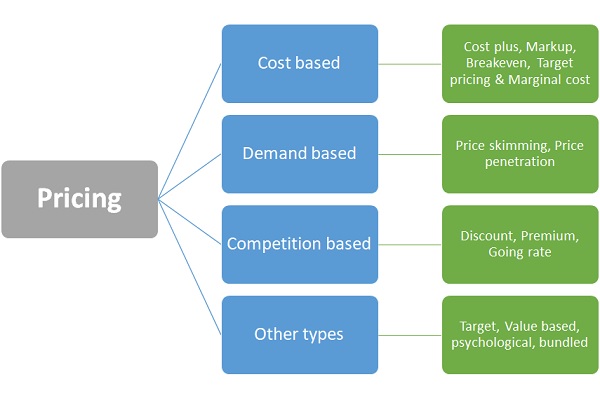What Makes a Business Highly Profitable?
Highly profitable businesses often share certain characteristics that enable them to maintain a competitive edge in their respective markets. One of the key factors is efficient operations, which involves streamlining processes, reducing waste, and optimizing resources. This can be achieved through the implementation of lean management principles, automation of repetitive tasks, and continuous monitoring of key performance indicators (KPIs).
Another crucial aspect of highly profitable businesses is their unique value proposition (UVP). A well-defined UVP sets a business apart from its competitors and provides a clear reason for customers to choose their products or services. This can be achieved through innovative product development, exceptional customer service, or a strong brand identity.
Effective pricing strategies also play a vital role in determining profit margins. Businesses with the highest margins often employ value-based pricing, which involves setting prices based on the perceived value of their products or services to the customer. This approach enables businesses to capture a premium price for their offerings, resulting in higher profit margins.
In addition to these factors, highly profitable businesses often have a deep understanding of their target market and customer needs. This enables them to develop products or services that meet the specific needs of their customers, resulting in higher sales and revenue. By combining efficient operations, a unique value proposition, effective pricing strategies, and a deep understanding of their target market, businesses can achieve high profit margins and maintain a competitive edge in their industry.
Businesses with the highest margins often have a strong focus on innovation and continuous improvement. They invest in research and development, stay up-to-date with the latest industry trends, and are always looking for ways to improve their products, services, and processes. This enables them to stay ahead of the competition and maintain their position as market leaders.
Furthermore, highly profitable businesses often have a strong financial management system in place. This includes effective budgeting, cash flow management, and financial reporting. By having a clear understanding of their financial performance, businesses can make informed decisions about investments, pricing, and resource allocation.
In conclusion, businesses with the highest margins often share certain characteristics, including efficient operations, a unique value proposition, effective pricing strategies, a deep understanding of their target market, a focus on innovation, and strong financial management. By incorporating these factors into their business strategy, companies can achieve high profit margins and maintain a competitive edge in their industry.
How to Identify Industries with High Margin Potential
Identifying industries with high margin potential is crucial for businesses looking to maximize their profits. One way to do this is by analyzing market trends and identifying areas with high demand and limited competition. This can be achieved through market research, industry reports, and analysis of consumer behavior.
Another key factor to consider is the level of competition in the industry. Businesses with the highest margins often operate in industries with limited competition, allowing them to maintain a premium price for their products or services. However, it’s also important to note that high competition can drive innovation and improvement, leading to increased efficiency and reduced costs.
Customer demand is also a critical factor in identifying industries with high margin potential. Businesses that can meet the specific needs of their customers are more likely to command a premium price for their products or services. This can be achieved through market research, customer feedback, and analysis of consumer behavior.
In addition to these factors, businesses can also use financial metrics such as gross margin, operating margin, and return on investment (ROI) to identify industries with high margin potential. By analyzing these metrics, businesses can gain a deeper understanding of the profitability of different industries and make informed decisions about where to invest their resources.
Some industries that tend to have high margin potential include software development, consulting services, and e-commerce stores with unique products. These industries often have high demand, limited competition, and the ability to command a premium price for their products or services.
Businesses can also use tools such as Porter’s Five Forces analysis to identify industries with high margin potential. This framework analyzes the competitive forces within an industry, including the threat of new entrants, the bargaining power of suppliers and buyers, and the threat of substitute products.
By combining these factors and using financial metrics and industry analysis tools, businesses can identify industries with high margin potential and make informed decisions about where to invest their resources. This can help businesses to maximize their profits and maintain a competitive edge in their industry.
It’s also important to note that industries with high margin potential can vary depending on the market and economic conditions. Businesses need to stay up-to-date with the latest industry trends and market research to identify new opportunities and stay ahead of the competition.
The Role of Pricing Strategies in Maximizing Margins
Pricing strategies play a crucial role in determining profit margins for businesses. The right pricing strategy can help businesses to maximize their margins, while the wrong one can lead to reduced profits and decreased competitiveness. One of the most effective pricing strategies for businesses with the highest margins is value-based pricing.
Value-based pricing involves setting prices based on the perceived value of a product or service to the customer. This approach takes into account the unique features, benefits, and quality of the product or service, as well as the customer’s willingness to pay. By setting prices based on value, businesses can command a premium price for their products or services, resulting in higher profit margins.
Another effective pricing strategy is price anchoring. This involves setting a high initial price for a product or service, and then offering discounts or promotions to create a perceived value. This approach can help businesses to increase their average sale price and maximize their margins.
Price elasticity is also an important consideration when it comes to pricing strategies. This refers to the responsiveness of demand to changes in price. Businesses that understand the price elasticity of their products or services can adjust their prices accordingly to maximize their margins.
In addition to these pricing strategies, businesses can also use price segmentation to maximize their margins. This involves dividing customers into different segments based on their willingness to pay, and setting prices accordingly. By charging higher prices to customers who are willing to pay more, businesses can increase their average sale price and maximize their margins.
It’s also important to note that pricing strategies should be aligned with the overall business strategy and goals. Businesses should consider their target market, competition, and revenue goals when developing their pricing strategy. By doing so, they can create a pricing strategy that maximizes their margins and drives long-term success.
Businesses with the highest margins often have a deep understanding of their customers’ needs and preferences, and use this information to develop pricing strategies that meet those needs. They also continuously monitor their pricing strategy and make adjustments as needed to ensure that they are maximizing their margins.
In conclusion, pricing strategies play a critical role in determining profit margins for businesses. By using value-based pricing, price anchoring, price elasticity, and price segmentation, businesses can maximize their margins and drive long-term success.
Efficient Operations: The Key to Maintaining High Margins
Efficient operations are crucial for maintaining high profit margins in businesses. When operations are streamlined and optimized, businesses can reduce costs, improve productivity, and increase revenue. This, in turn, enables them to maintain high profit margins and stay competitive in their industry.
One of the key strategies for achieving efficient operations is to reduce costs. This can be done by identifying areas of waste and inefficiency, and implementing cost-saving measures such as outsourcing, automation, and process improvements. By reducing costs, businesses can increase their profit margins and maintain a competitive edge.
Streamlining processes is another important aspect of efficient operations. This involves identifying and eliminating unnecessary steps, simplifying workflows, and implementing lean management principles. By streamlining processes, businesses can improve productivity, reduce waste, and increase efficiency.
Improving productivity is also essential for maintaining high profit margins. This can be achieved by investing in employee training and development, implementing performance metrics and incentives, and providing employees with the tools and resources they need to succeed. By improving productivity, businesses can increase revenue and maintain high profit margins.
In addition to these strategies, businesses can also use technology to improve efficiency and reduce costs. This can include implementing enterprise resource planning (ERP) systems, customer relationship management (CRM) software, and other technologies that automate and streamline business processes.
Businesses with the highest margins often have a strong focus on operational efficiency. They continuously monitor their operations and make adjustments as needed to ensure that they are running at optimal levels. This enables them to maintain high profit margins and stay competitive in their industry.
It’s also important to note that efficient operations are not just about reducing costs and improving productivity. They are also about creating a culture of continuous improvement and innovation. By fostering a culture of innovation and experimentation, businesses can stay ahead of the competition and maintain high profit margins.
In order to achieve efficient operations, businesses need to have a clear understanding of their operations and processes. This can be achieved by mapping out workflows, identifying bottlenecks and areas of inefficiency, and implementing process improvements. By having a clear understanding of their operations, businesses can make informed decisions about how to improve efficiency and reduce costs.
High Margin Business Ideas to Consider
There are several business ideas that tend to have high profit margins, including software development, consulting services, and e-commerce stores with unique products. These businesses often have a unique value proposition, efficient operations, and effective pricing strategies, which enable them to maintain high profit margins.
Software development is a high margin business idea that involves creating and selling software products or services. This can include mobile apps, web applications, and enterprise software solutions. Software development businesses can have high profit margins due to the low cost of production and the high demand for software products.
Consulting services is another high margin business idea that involves providing expert advice and guidance to businesses and individuals. This can include management consulting, IT consulting, and financial consulting. Consulting services businesses can have high profit margins due to the high demand for expert advice and the low cost of production.
E-commerce stores with unique products is a high margin business idea that involves selling products online through a website or platform. This can include niche products, handmade products, and products with a unique value proposition. E-commerce stores with unique products can have high profit margins due to the low cost of production and the high demand for unique products.
Other high margin business ideas include online education and training, digital marketing services, and subscription-based businesses. These businesses often have a unique value proposition, efficient operations, and effective pricing strategies, which enable them to maintain high profit margins.
Businesses with the highest margins often have a strong focus on innovation and customer satisfaction. They continuously monitor their operations and make adjustments as needed to ensure that they are meeting the needs of their customers and maintaining high profit margins.
It’s also important to note that high margin businesses often have a strong brand identity and a unique value proposition. They differentiate themselves from their competitors through their products, services, and customer experience, which enables them to maintain high profit margins.
In order to start a high margin business, it’s essential to conduct market research and analyze the competition. This will help you to identify areas of opportunity and create a unique value proposition that sets you apart from your competitors.
Additionally, it’s crucial to have a solid business plan and a well-defined target market. This will help you to create a effective pricing strategy and maintain high profit margins.
The Impact of Competition on Profit Margins
Competition can have a significant impact on profit margins, as it can drive down prices and increase costs. Businesses with the highest margins often have a strong competitive advantage, which enables them to maintain high profit margins despite intense competition.
One of the key strategies for differentiating a business and maintaining a competitive edge is to develop a unique value proposition. This involves creating a product or service that meets the specific needs of customers and sets the business apart from its competitors.
Another important strategy is to focus on customer satisfaction and loyalty. By providing exceptional customer service and building strong relationships with customers, businesses can increase customer loyalty and retention, which can help to maintain high profit margins.
In addition to these strategies, businesses can also use pricing strategies to maintain a competitive edge. This can include using value-based pricing, price anchoring, and price elasticity to maximize profit margins.
It’s also important to note that competition can drive innovation and improvement, which can lead to increased efficiency and reduced costs. By embracing competition and using it as an opportunity to improve, businesses can maintain high profit margins and stay ahead of the competition.
Businesses with the highest margins often have a strong focus on market research and analysis, which enables them to stay ahead of the competition and identify new opportunities. By continuously monitoring market trends and customer demand, businesses can adjust their strategies and maintain high profit margins.
In order to maintain a competitive edge, businesses must also be willing to adapt and evolve. This can involve investing in new technologies, developing new products or services, and expanding into new markets.
By differentiating their business, focusing on customer satisfaction and loyalty, using pricing strategies, embracing competition, and adapting to change, businesses can maintain high profit margins and stay ahead of the competition.
It’s also important to note that maintaining a competitive edge requires continuous effort and improvement. Businesses must continuously monitor their operations and make adjustments as needed to ensure that they are maintaining high profit margins and staying ahead of the competition.
Managing Costs to Maintain High Margins
For businesses with the highest margins, effective cost management is crucial to maintaining profitability. High-margin businesses often have a keen eye for reducing unnecessary expenses, optimizing processes, and improving supply chain efficiency. By implementing cost-saving strategies, companies can protect their profit margins and stay ahead of the competition.
One key strategy for managing costs is to reduce overhead expenses. This can be achieved by renegotiating contracts with suppliers, streamlining operations, and eliminating unnecessary personnel. By minimizing overhead costs, businesses can allocate more resources to core activities that drive revenue and growth.
Another approach to cost management is to improve supply chain efficiency. This involves optimizing logistics, reducing inventory levels, and implementing just-in-time delivery systems. By streamlining the supply chain, businesses can reduce waste, lower costs, and improve overall efficiency.
In addition to reducing overhead and improving supply chain efficiency, businesses with high margins often focus on improving productivity. This can be achieved through investments in technology, training, and process improvement initiatives. By boosting productivity, companies can increase output while reducing labor costs, resulting in higher profit margins.
Furthermore, businesses with high margins often prioritize cost-effective marketing strategies. This involves leveraging digital marketing channels, social media, and content marketing to reach customers at a lower cost. By reducing marketing expenses, companies can allocate more resources to product development, customer service, and other core activities.
Finally, businesses with high margins often maintain a culture of cost consciousness. This involves empowering employees to identify areas for cost reduction, implementing cost-saving initiatives, and rewarding employees for their contributions to cost management. By fostering a culture of cost consciousness, companies can ensure that cost management is a top priority across the organization.
By implementing these cost management strategies, businesses with high margins can maintain their profitability and stay ahead of the competition. Whether it’s reducing overhead, improving supply chain efficiency, or boosting productivity, effective cost management is essential for long-term success in high-margin industries.
Scaling a High Margin Business for Long-Term Success
For businesses with the highest margins, scaling is crucial for long-term success. As a company grows, it’s essential to maintain high profit margins while expanding into new markets, developing strategic partnerships, and investing in technology. By scaling effectively, businesses can increase revenue, improve efficiency, and stay ahead of the competition.
One key strategy for scaling a high margin business is to expand into new markets. This can be achieved by identifying new customer segments, developing targeted marketing campaigns, and establishing strategic partnerships with suppliers and distributors. By entering new markets, businesses can increase revenue and maintain high profit margins.
Another approach to scaling is to develop strategic partnerships. This involves collaborating with other businesses to share resources, expertise, and risk. By partnering with complementary businesses, companies can access new markets, improve efficiency, and reduce costs. Strategic partnerships can also help businesses stay ahead of the competition and maintain high profit margins.
In addition to expanding into new markets and developing strategic partnerships, businesses with high margins often invest in technology to improve efficiency and reduce costs. This can include implementing automation systems, investing in data analytics, and developing e-commerce platforms. By leveraging technology, companies can streamline operations, improve productivity, and maintain high profit margins.
Furthermore, businesses with high margins often prioritize innovation and R&D. This involves investing in new product development, process improvement initiatives, and employee training programs. By prioritizing innovation, companies can stay ahead of the competition, maintain high profit margins, and drive long-term growth.
When scaling a high margin business, it’s also essential to maintain a focus on cost management. This involves continuing to reduce overhead costs, negotiate with suppliers, and improve supply chain efficiency. By maintaining a focus on cost management, businesses can ensure that high profit margins are maintained even as the company grows.
Finally, businesses with high margins often prioritize talent acquisition and retention. This involves attracting and retaining top talent, investing in employee development programs, and fostering a culture of innovation and entrepreneurship. By prioritizing talent acquisition and retention, companies can ensure that they have the skills and expertise needed to drive long-term growth and maintain high profit margins.
By scaling effectively, businesses with the highest margins can maintain their profitability and drive long-term growth. Whether it’s expanding into new markets, developing strategic partnerships, or investing in technology, scaling is crucial for long-term success in high-margin industries.







